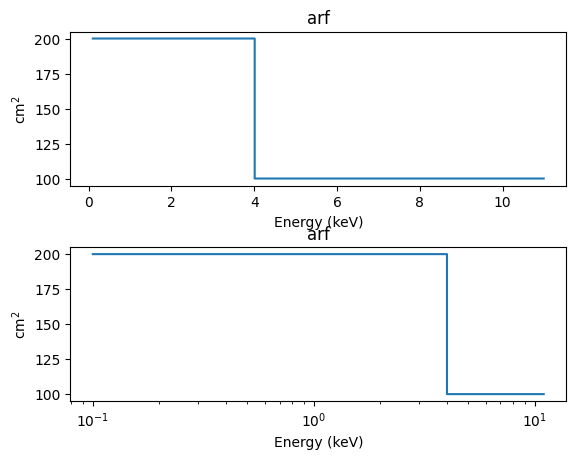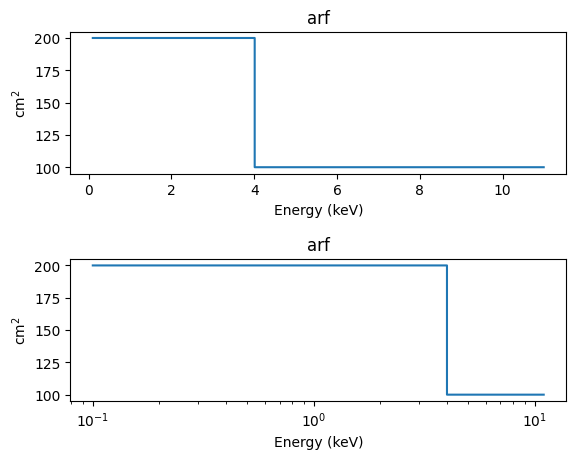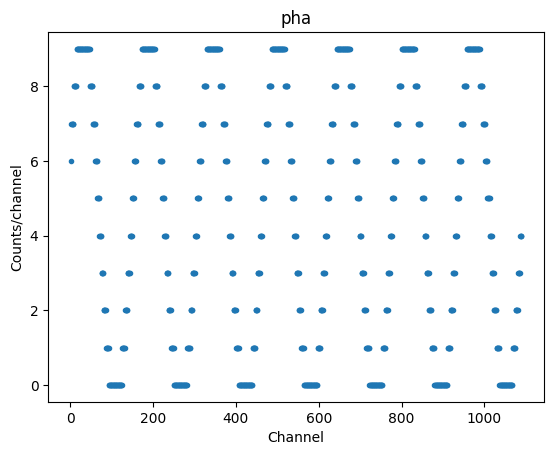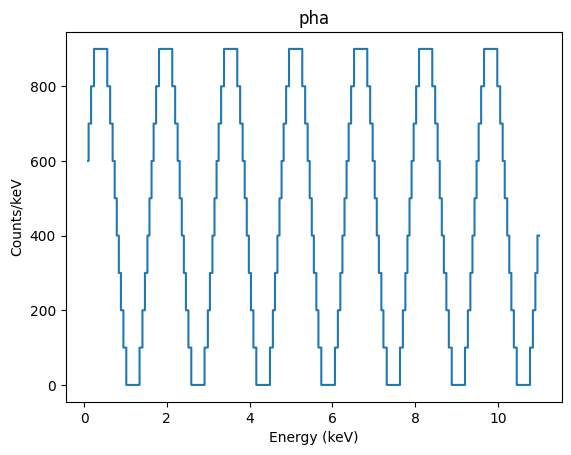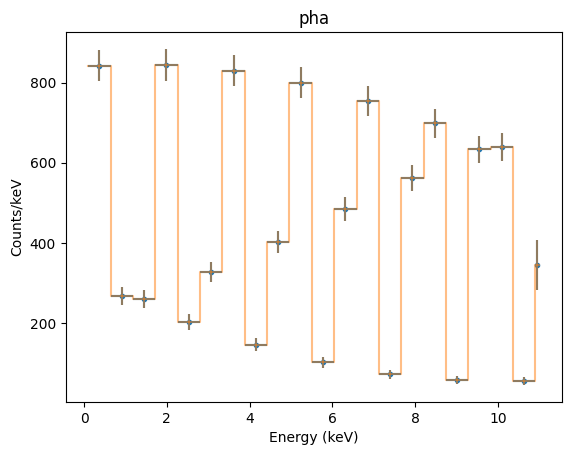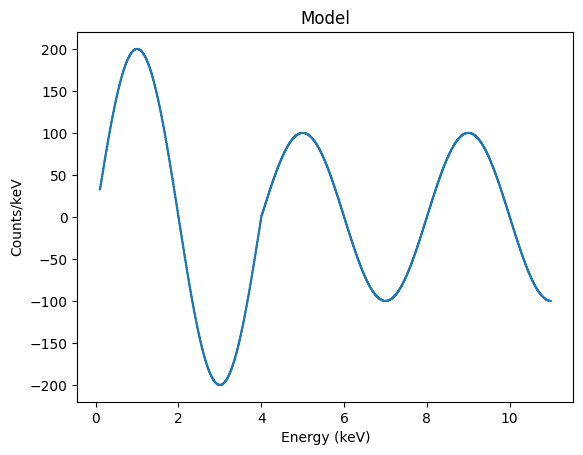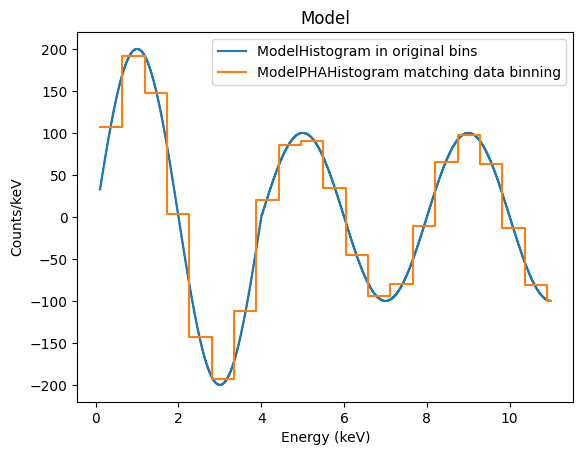A sample of plots
The idea of this notebook is to show off a number of plot types, and act as a simple check of the plotting output. It requires matplotlib and does not attempt to describe the plots (see the help for the plot constructor for this!).
[1]:
import numpy as np
%matplotlib inline
[2]:
from sherpa import data
from sherpa.astro import data as astrodata
from sherpa import plot
from sherpa.astro import plot as astroplot
One dimensional data plots
[3]:
x1 = [100, 200, 600, 1200]
y1 = [2000, 2100, 1400, 3050]
d1 = data.Data1D('oned', x1, y1)
plot1 = plot.DataPlot()
plot1.prepare(d1)
plot1.plot()
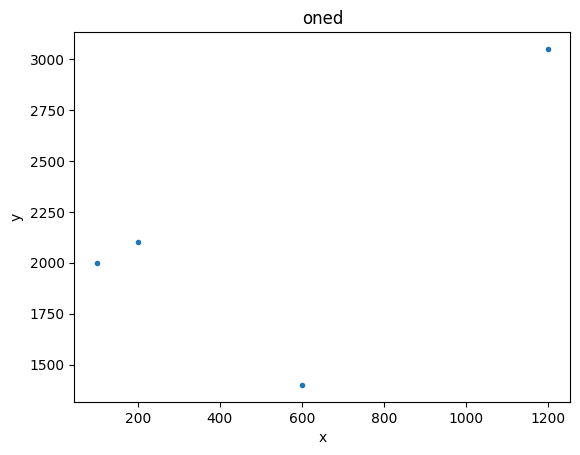
We can have some fun with the plot options (these are a mixture of generic options, such as xlog, and ones specific to the plotting backend - which here is matplotlib - such as marker).
[4]:
plot1.plot(xlog=True, linestyle='dotted', marker='*', markerfacecolor='orange', markersize=20, color='black')
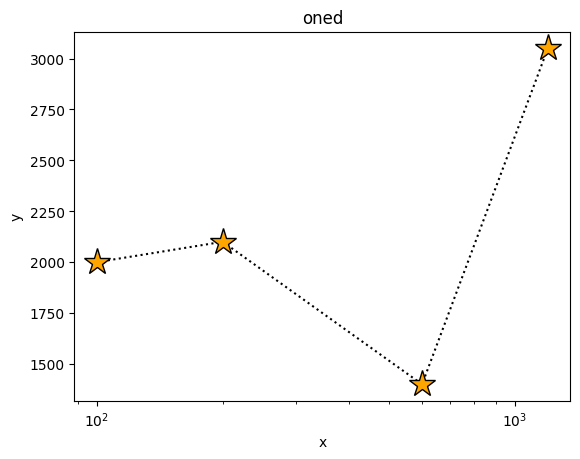
The plot object contains the preferences - here we look at the default plot settings. Note that some plot types have different - and even multiple - preference settings.
[5]:
plot.DataPlot.plot_prefs
[5]:
{'xlog': False,
'ylog': False,
'label': None,
'xerrorbars': False,
'yerrorbars': True,
'color': None,
'linestyle': 'None',
'linewidth': None,
'marker': '.',
'alpha': None,
'markerfacecolor': None,
'markersize': None,
'ecolor': None,
'capsize': None}
Error bars - here on the dependent axis - can be displayed too:
[6]:
dy1 = [100, 50, 200, 300]
d2 = data.Data1D('errors', x1, y1, dy1)
plot2 = plot.DataPlot()
plot2.prepare(d2)
plot2.plot()
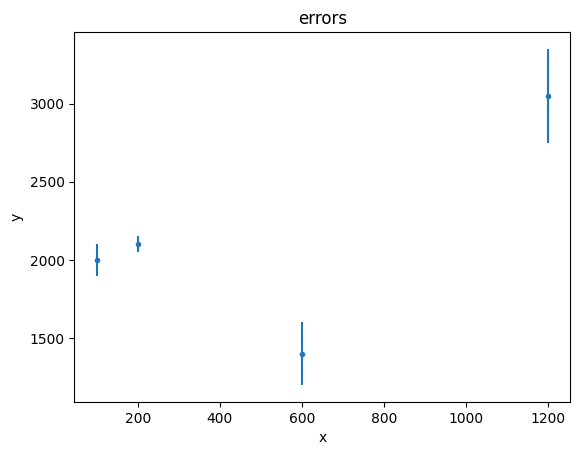
[7]:
plot2.plot(capsize=4)
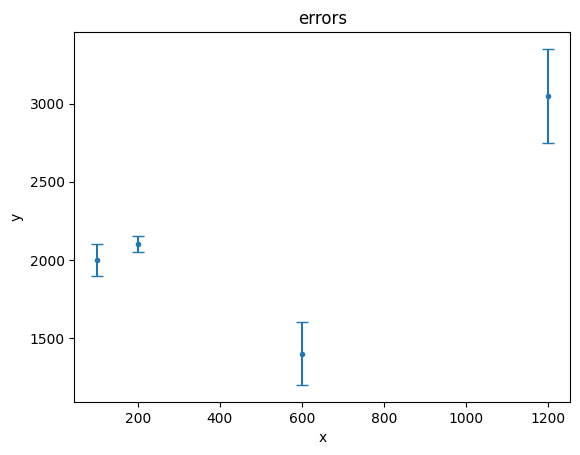
Histogram-style data (with low and high edges) are handled similarly:
[8]:
xlo2 = [0.1, 0.2, 0.4, 0.8, 1.5]
xhi2 = [0.2, 0.4, 0.6, 1.1, 2.0]
y2 = [10, 12, 3, 0, 4]
data3 = data.Data1DInt('int1', xlo2, xhi2, y2)
plot3 = plot.DataHistogramPlot()
plot3.prepare(data3)
plot3.plot(xlog=True)
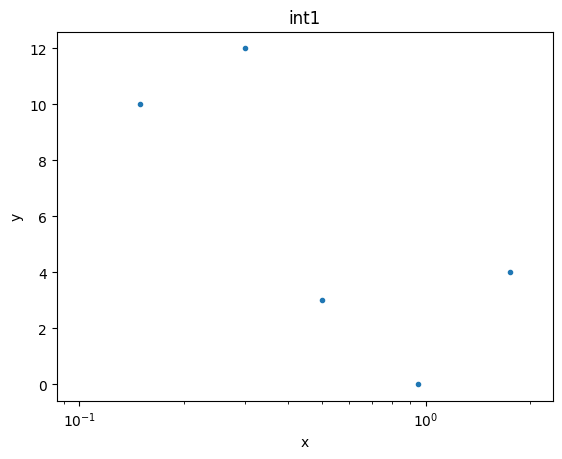
If we want to see the data drawn “like a histogram” then we need to set the linestyle attribute:
[9]:
plot3.plot(xlog=True, linestyle='solid')
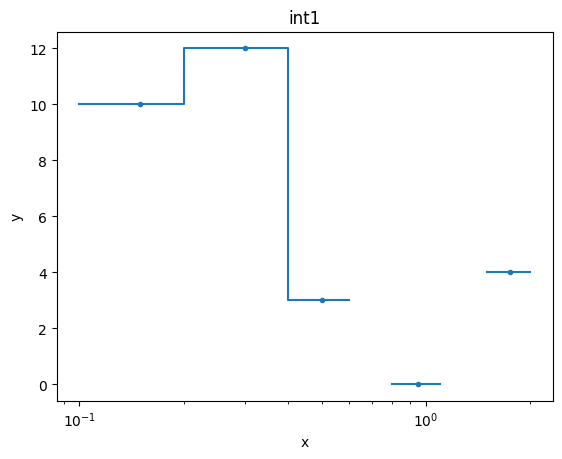
The histogram-style plots are an example of a plot using a different name for the preference settings, in this case histo_prefs:
[10]:
plot.DataHistogramPlot.histo_prefs
[10]:
{'xlog': False,
'ylog': False,
'label': None,
'xerrorbars': False,
'yerrorbars': True,
'color': None,
'linestyle': 'None',
'linewidth': None,
'marker': '.',
'alpha': None,
'markerfacecolor': None,
'markersize': None,
'ecolor': None,
'capsize': None}
Previously we explicitly set the error values, but we can also use one of the chi-square statistics to come up with error values. In this case it’s just the square-root of the data value (so, for \(x \sim 1\) bin, we have an error of 0):
[11]:
from sherpa.stats import Chi2DataVar
plot4 = plot.DataHistogramPlot()
plot4.prepare(data3, stat=Chi2DataVar())
plot4.plot(linestyle='dashed', marker=None, ecolor='orange', capsize=4)
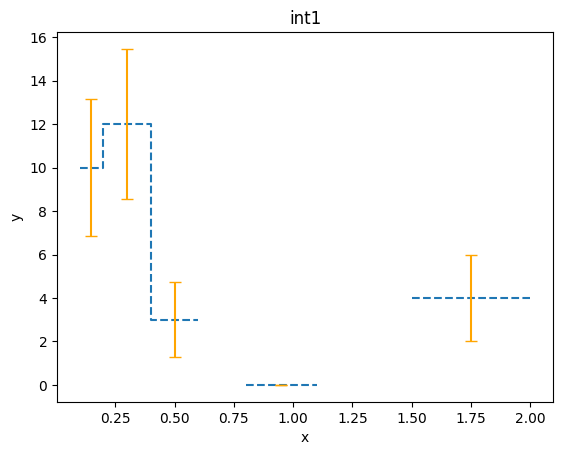
Axis labelling
The axis labels depend on the plot object and the data used in the prepare call. Functionality added in release 4.17.0 allows us to change the labels with the set_xlabel and set_ylabel calls of the Data class:
[12]:
# These changes must be made before the call to prepare.
data3.set_xlabel("distance [kpc]")
data3.set_ylabel("Relative abundance")
plot5 = plot.DataHistogramPlot()
plot5.prepare(data3)
plot5.plot(linestyle="solid", marker=None)
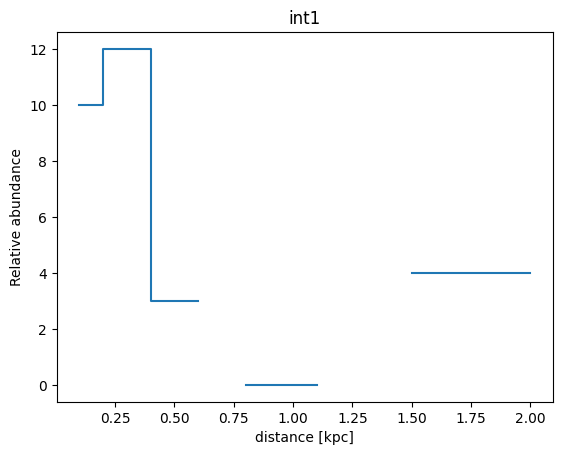
Object-less plots
There are a number of plot classes that don’t need a data object, such as scatter plots:
[22]:
rng = np.random.default_rng(1273)
# I've never used the Wald distribution before, so let's see how it looks...
#
z1 = rng.wald(1000, 20, size=1000)
z2 = rng.wald(1000, 2000, size=1000)
# We take advantage of matplotlib functionality in labelling the axes and title.
#
splot = plot.ScatterPlot()
splot.prepare(z1, z2, xlabel='z$_1$', ylabel='z$_2$', name='(z$_1$, z$_2$)')
splot.plot(xlog=True)
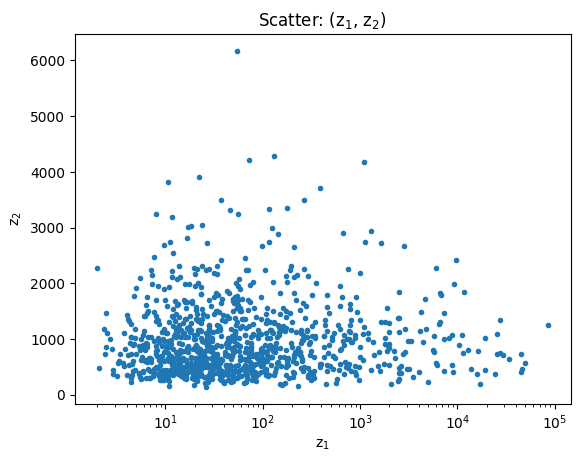
and cumulative plots:
[23]:
cplot = plot.CDFPlot()
cplot.prepare(z1, xlabel='z', name='z')
cplot.plot(xlog=True)
cplot.prepare(z2)
cplot.overplot()
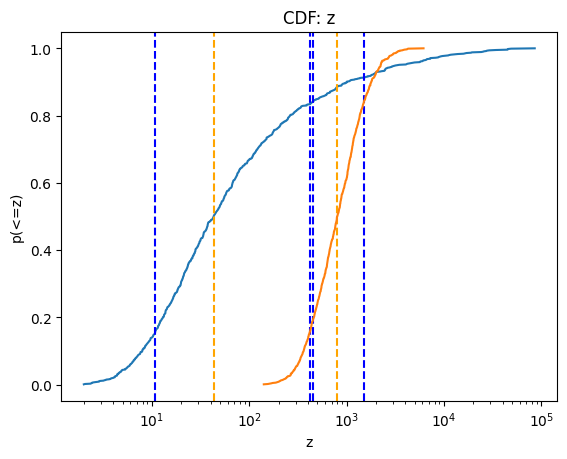
Note that this is a small sampling of the available plot types (although most are variants of plotting either the data or a model).
